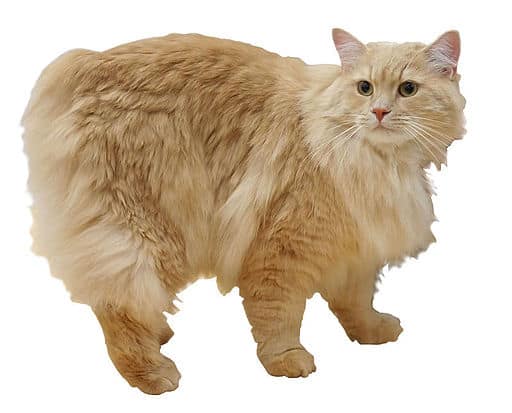
Diseases of the Cymric cat, the main pathologies of this feline breed. Let’s find out which ones can hit him the most.
The Cymric was born from a spontaneous genetic mutation so we can say that it is a long-haired Manx.
Obviously, with this feline breed it shares both characteristics related to character and physique , such as a very short or in some cases absent tail , as well as diseases and health problems.
In today’s article we will discover, in particular, which diseases of the Cymric.
Diseases of the Cymric
Although the Cymric is a solid and robust cat, it is not immune to certain diseases, on the contrary its origins are a source of pathologies. Let’s find out why!
The Cymric as we mentioned is a very lively cat, rather active, affectionate and sociable. Its main flaw is the adoration of food for which it would give up games and cuddles.
In general, if kept on a diet and well cared for, it can have an average life span of about 15 years.
However, it is necessary to be informed about the diseases of the Cymric, as it is subject to :
- corneal dystrophy: It is an ocular pathology that can lead to a reduction of vision, in the most serious cases even to blindness. Corneal dystrophy is characterized by abnormal deposits of calcium and cholesterol within the cornea. In general, small opaque grey / whitish lesions are visible in the cat on the corneal surface. Corneal dystrophy is usually bilateral and treatment varies according to the type of dystrophy and the symptoms present;
- intertrigo: It is a skin inflammation due to skin rubbing. It ranks among the most common dermatitis: pyoderma. It is also called skin fold dermatitis. Although it is not a genetic disease, the causes of intertrigo in cats and dogs depend mainly on a physical predisposition, characterized by the presence of skin folds. It has been shown that some Cymric specimens can have this health problem, especially if they are severely overweight or obese;
- megacolon: It is a pathology affecting the large intestine that appears enormously dilated with reduced functionality ( chronic constipation in the cat ) and full of fecal material. This condition, very rare and often linked to Manx Syndrome, prevents the colon from doing its regular job. If the cat is already in an advanced stage of the disease, the vet can only intervene surgically.
- Manx Syndrome: A genetic disorder involving the genes that control the length of the cat’s tail. It is a dangerous rare genetic anomaly that acts through a mutated gene, which affects the length of the tail by affecting the spinal column and stopping its growth. So it does not simply have a very short or absent tail but it is the vertebral column that is short. In severe cases, it can have problems not only with the spine but also with the spinal cord. The Cymric affected by this syndrome is unable to assume the right posture and cannot even control the muscles involved in basic functions such as urination and defecation well. A Cymric with Manx Syndrome has a much shorter life expectancy and on average does not live more than 5 years.
Common diseases of cats

As with all cats, the Cymric also has the possibility of falling ill with the following diseases, common in all cat breeds:
- Allergies: They can be of various origins. To be able to guess that the cat is an allergic subject, just observe it. If the animal tends to scratch itself up to scratch itself, sometimes even up to injure itself, it is easy for the animal to suffer from some skin allergy;
- Abscess: It is an infection that we can observe on the paws, behind the tail or on the muzzle of the animal. It occurs when there are deep wounds on the cat’s body;
- Conjunctivitis: It is the inflammation of the mucous membranes of the cat’s eye ;
- FIV : the syndrome called Feline Immunodeficiency (FIV) is an infectious disease caused by a retrovirus;
- Mycosis: It is a disease caused by fungi, which can cause redness, scabs and other symptoms that cause the cat to scratch constantly, with the risk of spreading the infection to other parts of the body;
- Otitis : It is the inflammation of the epithelium that covers the ear canal of the auricle. It can be external, internal or attack the middle ear. It occurs mainly in cats with low immune defences;
- Obesity and diabetes: Cymric needs to consume meals based on animal proteins on a daily basis, which more than any other substance is able to transform into energy and minimize the amount of carbohydrates present in its diet. He also needs daily physical exercise, several games, scratching posts and high shelves to climb, being a skilled jumper. All this will keep him away from overweight and obesity;
- Periodontitis : A disease of the cat’s mouth which, if not treated in time, can be even fatal;
- Mange: is caused by a mite of which there are several species and subspecies. These mites cause severe skin infections in cats, generally starting in the face and ears and spread to the rest of the body and are highly contagious;
- Toxoplasmosis: it is an infectious, parasitic disease caused by the parasite Toxoplasma gondii, which finds its final host in the feline where it can reproduce.






